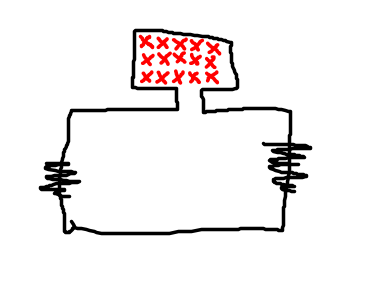I was watching a video of Walter Lewin (8.02x-Lecture 16 to be precise), where he demonstrates an experiment which violates the Kirchhoff's Law.
The way I interpret Kirchhoff's laws is by imagining the battery as being a waterfall, and all the electric components being placed along the flow, harvesting the flow. Therefore it's commonsensical to say that the potential difference across the components equals that of the entire waterfall.
At first sight, his experiment seemed flawed to me since how can the potential difference vary along a negligibly resisting wire, for two resistors? But after further insight and some discussions with my educator, I was led to the conclusion that the discrepancy here was being caused by the connecting wires, which had some potential difference across them as well, therefore Kirchhoff's laws hold!
To quote my educator:
A varying magnetic field leads to the conception of circumferential electric fields in the plane perpendicular to the magnetic field. It is these electric fields which serve as an EMF source(since they move the electrons in the conductor), and hence there is a potential difference across the conductors proportional to the length.
For me, the above explanation was correct since it was in-line with everything I'd studied so far, and I discarded Walter Lewin's argument considering it to be a small mistake from his end(which is weird since he always corrects himself sooner or later).
Here are some of the illustrations which my educator had used while explaining it to me.

The problem, or maybe an opportunity to correct myself, arose today when I saw that Walter Lewin confirmed that what he had demonstrated was true.
So my question here is what should I, as a class 12th student, believe to be true? I'm really curious about this whole phenomenon and want to understand it. Also, is the argument involving the circumferential electric fields correct? Are Kirchhoff's laws really violated?


